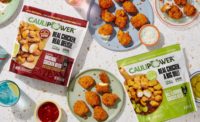Snack and bakery consumers have faced a number of formidable challenges in recent years—the pandemic, inflation, uncertain job conditions, and more. Despite all the trials and tribulations, consumers still want snacks and baked goods to fortify them, though according to data science and insights firm 84.51°, their interests in such products are evolving.
To learn more, Snack Food & Wholesale Bakery connected with Barbara Connors, vice president of strategy and acceleration, 84.51°, to discuss recent shifts in consumer preference and what likely lies ahead.
Jenni Spinner: How have consumer preferences evolved in recent years? Please expand on shopper behavior before the pandemic, at the start, and how it has evolved since COVID-19’s arrival.
Barbara Connors: The past two and half years have been characterized by continued disruption. Behavior has shifted around both grocery shopping and food consumption, and priorities and preferences have evolved in response to shifting climate around us. A few macro-trends have dominated the landscape.
First, while e-commerce adoption was growing prior to the pandemic, its adoption skyrocketed with the onset of COVID. Health and safety drove customers to e-commerce, but the main driver for sustained use now is convenience. We have also seen the emergence of hybrid shopping, through which customers are leveraging multiple modes of shopping to fulfill their various needs. They go in-store for some trips and leverage pickup or delivery for others.
Cooking and eating at home was the second massive trend that COVID-19 sparked. With quarantines, many were forced to cook at home. However, as time went on, people found many benefits of cooking at home that have driven this to be a sustained habit – many found they enjoy cooking, others state that it enables them to eat healthier, and as prices began to rise customers now attribute the cost as a key driver as well. We are now in the third holiday season since Covid’s arrival, and as people are eager to gather with family and friends and reconnect, many are using food to connect. We asked customers last month where they plan to source recipes, for holiday dishes, and “family recipes” rank #1 for the main dish, sides, and desserts.
As inflation began to take hold, it has become the primary concern for shoppers throughout much of this year. In fact, 85% of customers we surveyed last month now believe a recession is coming, and nearly half believe we are already in one. Price increases have created new constraints and pressures for customers and has led to significant shifts in shopping behavior again this year. The most notable increase in behavior has been the consistent and persistent desire to seek out sales, deals, and coupons more often. However, in addition to that, we also have seen a shift toward smaller, more frequent trips and an increased propensity to switch brands to find lower-cost options.
Finally, in response to all the changes and stressors that people have had to react to over the past few years, we had also seen an increased desire to focus on self-care and well-being. This has shown up in increased desire to eat healthier foods, an increased focus on immunity, and even as we look toward the new year. We just recently asked customers what they anticipate prioritizing for new year’s resolutions, and while “eating healthier” was a consistent goal that came to the top of the list again this year, we also saw some new additions that indicate a desire for rebalancing of priorities, including spending more time with loved ones and improving sleep.
JS: Please talk about the increasing consumer interest in connecting with snack and bakery brands that more closely meet their specific interests and needs, and how producers can meet them.
BC: Price and health are two significant factors that influence the decisions customers are making about what brands they put in their baskets. Below are two ways that snack and bakery brands can proactively get ahead of them:
First, brands can connect directly with customers to understand exactly what attributes they are seeking from a brand or category and what innovation concepts are most appealing. Consumer research that is targeted on verified shopper behavior enables brands to get critical feedback quickly and confidently on their innovation pipeline from existing brand buyers prior to launch. Additionally, with new self-serve research solutions like 84.51° In-Queries, brands can execute research quicker and easier than ever, while maintaining the quality they need to make confident decisions.
Also, it is critical for brands to clearly communicate the benefits they are delivering to their target shoppers. In a world in which people are bombarded with messages, retail media like Kroger Precision Marketing provides a highly effective way for brands to deliver relevant content and offers to the specific customers they want to reach across the full path to purchase, connect content with a direct ability to download a coupon or add an item to cart and close the loop on performance so they can understand which activations were most effective.
JS: You mention that brand marketers will need some particular tools going forward. Can you expand on that?
BC: Expectations are now higher than ever. Customers expect brands to be able to understand their preferences and brands need more seamless through-lines from insights to activation to deliver on those insights. The good news is that new tools are available that enable brands to move faster and with confidence. Two high-impact ones are below:
- Digital insights – As e-commerce has grown, it has created an entirely new set of data and insight around the digital shopping experience. Clickstream insights offer the ability for brands to not only understand what items are being purchased online but how a shopper builds their online cart and engages with the site or app. The brands that invest the time and resources to analyze this new space and pair it with traditional shopper insights will be the ones who can form truly customer-centric, data-driven omnichannel strategies to win.
- Connecting insights to activation – When a brand conducts an analysis and identifies a critical customer group they want to act against, it can be frustrating when there is no direct way to translate that analysis directly into a marketing activation. New innovation and technological advancements have enabled us to remove this friction for CPGs, enabling them to seamlessly transform output from analysis to a KPM audience.
JS: What about coupons and bargain-hunting? How can brands deal with the increasing interest in bargain-hunting tendencies in snack and bakery purchases?
BC: The top behavior that customers are consistently taking in response to the inflationary pressures they are facing is seeking out sales, deals, and coupons more often. This is a double-edged sword that presents both a threat and an opportunity for brands. Whether customers are shopping in-store or online, delivering value is a top priority to drive conversion. Brands need to do several things to win in this environment:
- Re-evaluate promotional strategy and effectiveness. When customer behavior is changing so dramatically, it means that old best practices around what worked best in driving incrementality may not hold true anymore. It is critical to analyze how customers are engaging with brands and categories today, and so CPGs can design promotions on the right products, with the right offer, and at the right times, to drive the return they seek.
- Tap into the benefits that both in-store and online experiences provide. In-store promotions provide the opportunity to drive mass reach and drive conversion at scale. However, targeted digital promotions enable brands to deliver more variable and potentially deeper discounts to the customers who matter most. When paired together, brands ensure they are delivering value wherever customers are shopping and blending scale and precision to maximize return.
- Double down on loyalty. Loyalty is being tested in a big way for brands, and that means that strategic participation in loyalty programs has never been more important. Programs like Kroger’s Best Customer Communications offer the ability for brands to deliver truly personalized offers to their most loyal customers, thanking them for continued engagement and incenting future purchases.
JS: You also discuss omnichannel expectations. What do you foresee around digital touchpoints and the merging of digital and in-store experiences?
BC: We are now operating in an omnichannel retail world, and that means that brands and retailers must create a seamless experience for customers. Customers are shopping both in-store and online, trying new things, adapting their routines, and forming new habits. Brands should leverage the breadth of digital touchpoints and capabilities to influence both the e-commerce trip and the in-store trip. Whether a customer completes an end-to-end e-commerce transaction, goes online prior to an in-store shopping trip to load digital coupons to the card, or opens their app while walking down an aisle to look up information on a product or recipe, it is imperative that brands leverage the breadth of new tools available to them to capitalize on opportunities to get into both the in-store and online basket. The digital and in-store experience is already merging for customers, so they expect us in the industry to connect our strategies for them.





